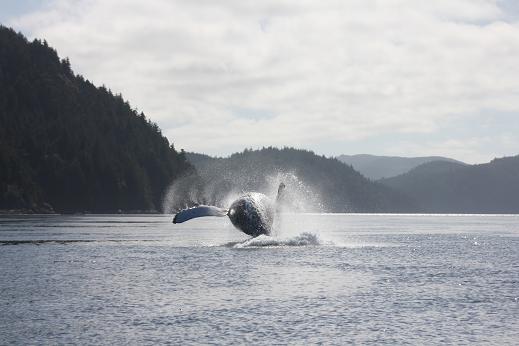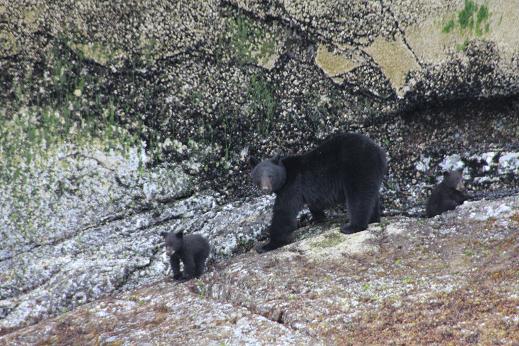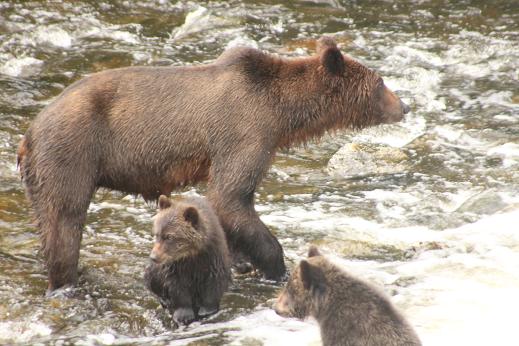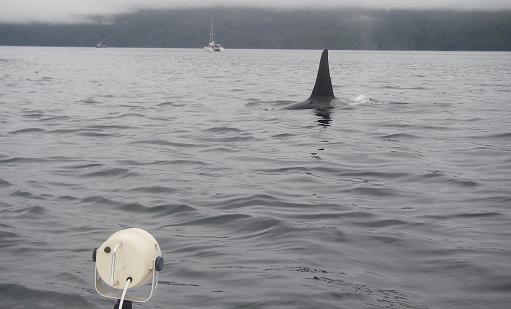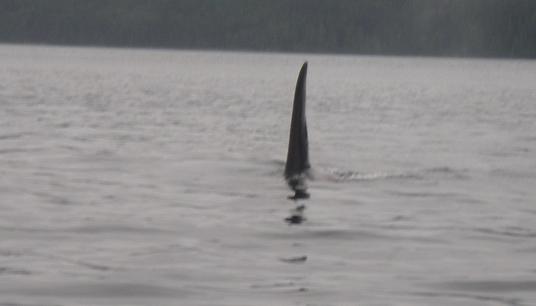…breaching whales. Just because there are more whales breaching does not mean that there are more photos of whales breaching. It is still one of the most difficult pictures to obtain and until they start giving warning of a breach it will remain difficult.
Grizzly Bear and Wildlife Tour Blog
We offer an exceptional fly-in lodge for Grizzly Bear Watching and Whale Watching in British Columbia.
Learn about What’s happening at the Lodge, view our British Columbia’s Wildlife Report, read our Grizzly Bear Watching Blog and Whale Watching Blog. Learn more about a Day on the River Blog, see Our Tour Guide’s Photos & Blog and Photos from Our Guests.
Whale watching – Good
Humpback whale lunge feeding on a school of herring. As the years pass more and more humpback whales are remaining all summer in our viewing area. Ten years ago it was one or maybe two now a dozen whales on a whale watching trip is the norm. More whales increase the opportunity for photos of lunge feeding and…
Killer Whales Moving
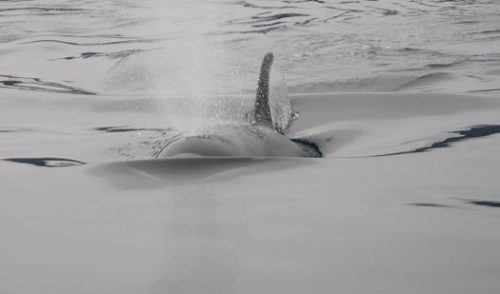 The opposite of yesterdays post is a killer whales going some place. This orca a member of a pod that was passing through Blackfish Sound towards Johnstone Strait (both part of the Inside Passage). The bow wake tells us that this orca was not wasting time as it came toward and passed beneath our boat.
The opposite of yesterdays post is a killer whales going some place. This orca a member of a pod that was passing through Blackfish Sound towards Johnstone Strait (both part of the Inside Passage). The bow wake tells us that this orca was not wasting time as it came toward and passed beneath our boat.
Black Bear cubs wait 2 of 2
These first year black bear cubs are not able to scrape the barnacles and muscles off the rocks like their mother so they are waiting for a chance to move off the beach to nurse. But then again this photo was from June 18th which makes them two and a half months younger than the grizzly cubs of yesterdays post and at this age that is a long time.
Grizzly Bear cubs wait 1 of 2
These two first-year grizzly bear cubs spotted on a morning tour try to stay as dry as possible as they wait for mother to catch them another salmon. It is September 6th and the mother is still quite thin as she has to feed her cubs plus put on enough bulk to survive hibernation. Fortunately she has two months to achieve that goal.
Killer whales approaching tour 2 of 2
Killer whales approaching tour 1 of 2
Yes it is normal to have killer whales / orca travel in pods that are a complex matriarchal society. Sons and daughters stay with their mother throughout their lives, even after they have offspring of their own. However this does not mean that the larger and older males are always in close proximity they often travel separate but parallel to the family group. For photos it is good to find a large male as they are slower to come out of the water and when the tip of their large dorsal fin shows you have time for a photo. This photo leads to tomorrow’s post….
Pacific White-sided Dolphins Playing
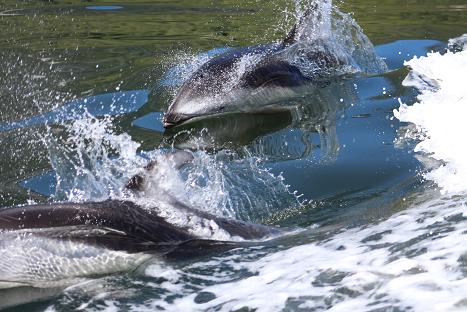 Peder and Ann again capture the activity on one of their days from their visit in July, 2015. For me as a guide and I know from the guest comments this is one of the highlights of a day on the water – a group of Pacific White-sided Dolphins. Such a clear and sharp photo emphasizes the speed of these dolphins as they keep pace with our boat. The Marine Mammal Watching Guidelines say we are to stay one hundred meters from the dolphins but unfortunately or fortunately depending on your point of view the dolphins cannot read.
Peder and Ann again capture the activity on one of their days from their visit in July, 2015. For me as a guide and I know from the guest comments this is one of the highlights of a day on the water – a group of Pacific White-sided Dolphins. Such a clear and sharp photo emphasizes the speed of these dolphins as they keep pace with our boat. The Marine Mammal Watching Guidelines say we are to stay one hundred meters from the dolphins but unfortunately or fortunately depending on your point of view the dolphins cannot read.
Active Humpback Whale Taillobbing
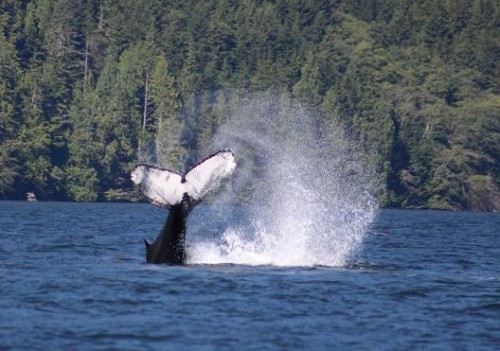 Peder and Ann, just so you know, Angus has informed me that the humpback that is tail slapping is called “Lucky”. If it was my photo with my point and shoot Pentax I would say that it was a lucky photo but from the number of great photos that you have sent us I know that there was a lot of skill involved. This type of behaviour from the humpback whales while we are on a whale watching tour has become much more common over the past few years but capturing such a good photo is still rare. Thank you.
Peder and Ann, just so you know, Angus has informed me that the humpback that is tail slapping is called “Lucky”. If it was my photo with my point and shoot Pentax I would say that it was a lucky photo but from the number of great photos that you have sent us I know that there was a lot of skill involved. This type of behaviour from the humpback whales while we are on a whale watching tour has become much more common over the past few years but capturing such a good photo is still rare. Thank you.
Grizzly bear and cubs “working” the beach.
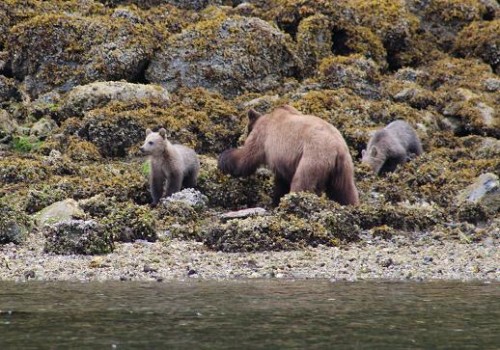
Even if I did not have the date on the photos to check by the size of these grizzly bear cubs one can tell it is mid July in Knight Inlet. Peder and Ann have captures the activity that we find on the beach at this time of year. The salmon have not arrived in the rivers so the grizzlies obtain much of their protein rolling rocks on the beach for the crabs, clams, amphipods and other tiny invertebrates. The cubs may roll a few of the smaller rocks but mostly rely on mum. We have attracted the one cubs attention for a few minutes but it’s mother is only interested in food. Not to worry there were good photos face on but it is common to have the grizzly in this position as it is easier to roll rocks down hill.
